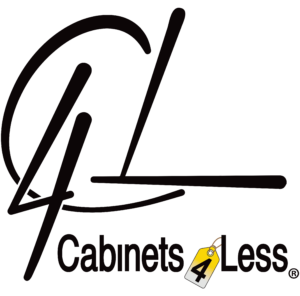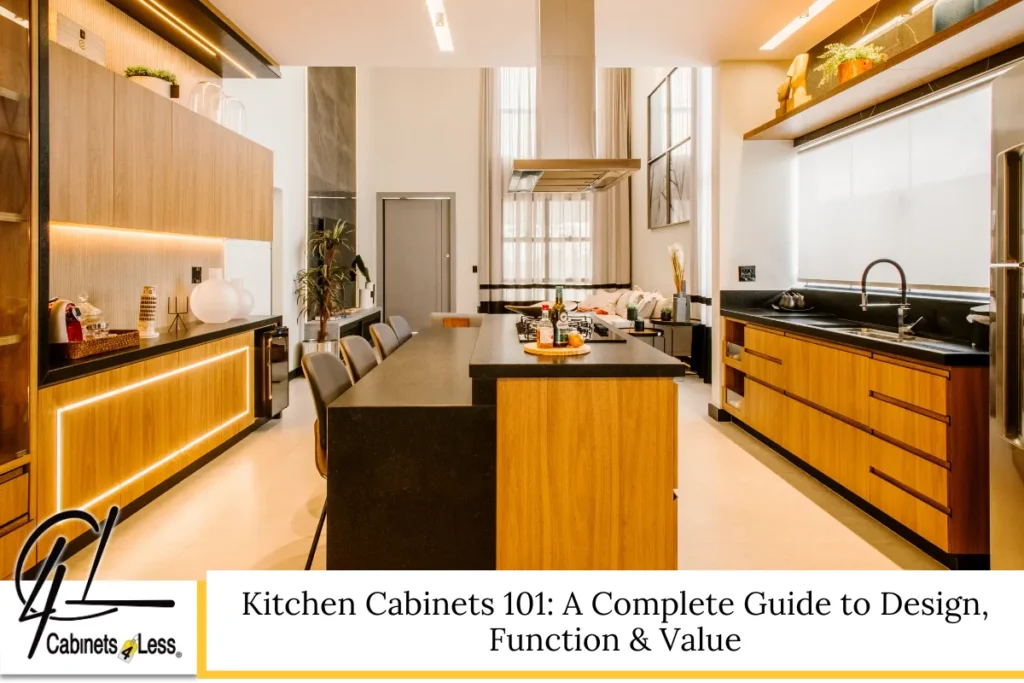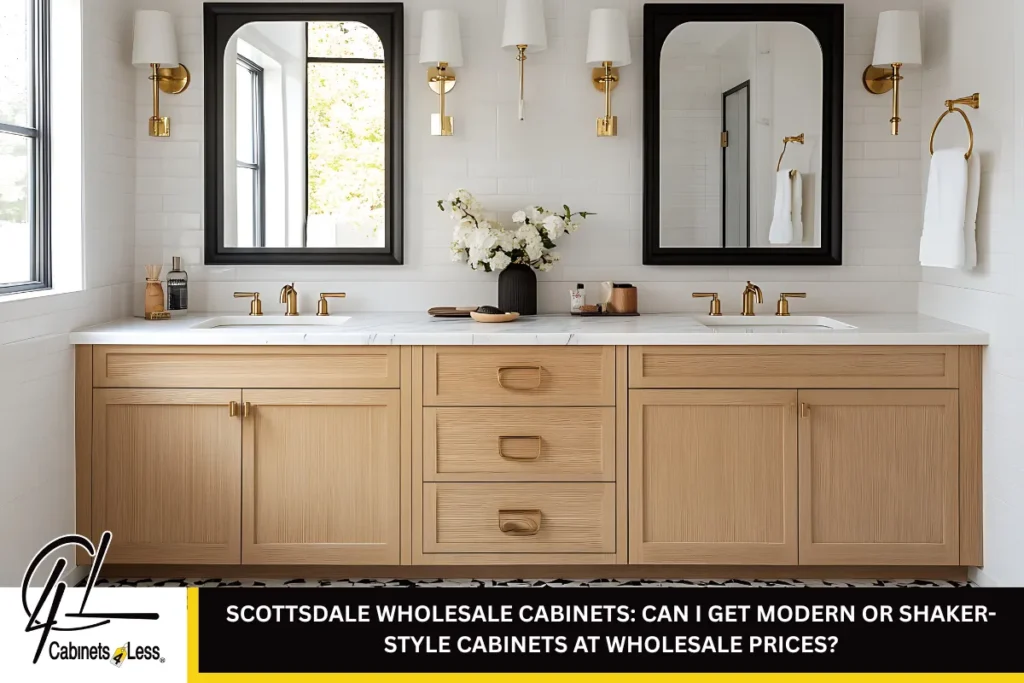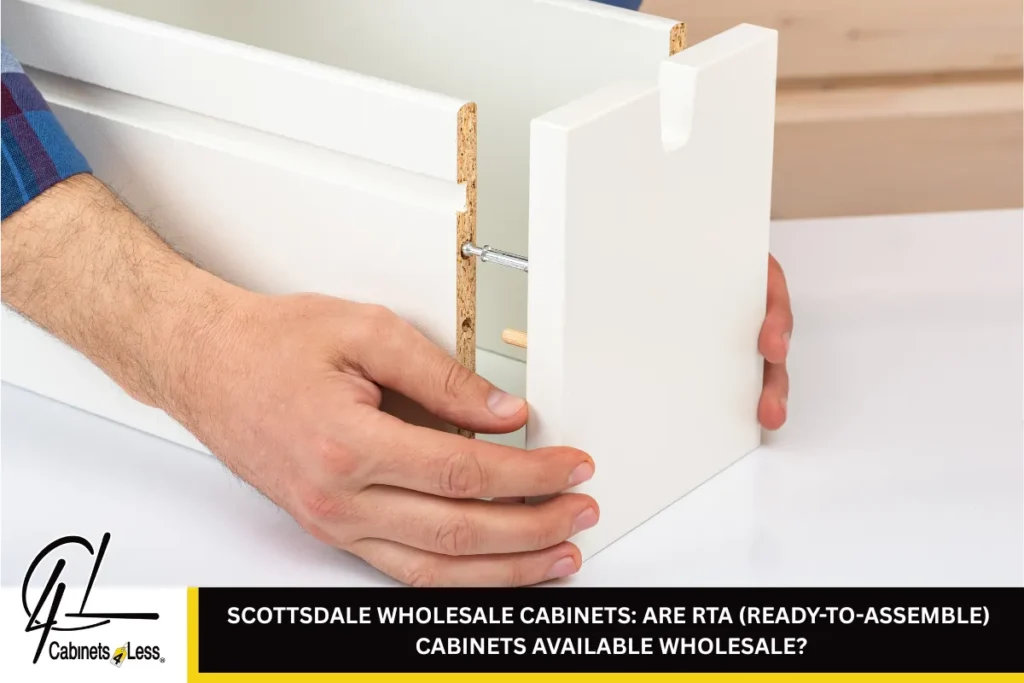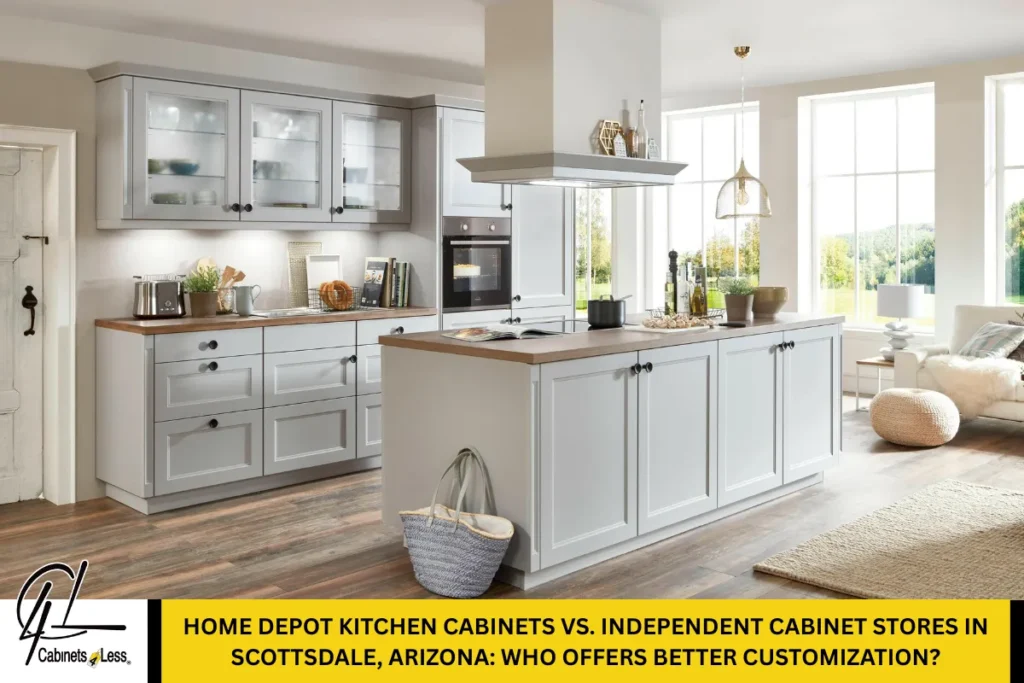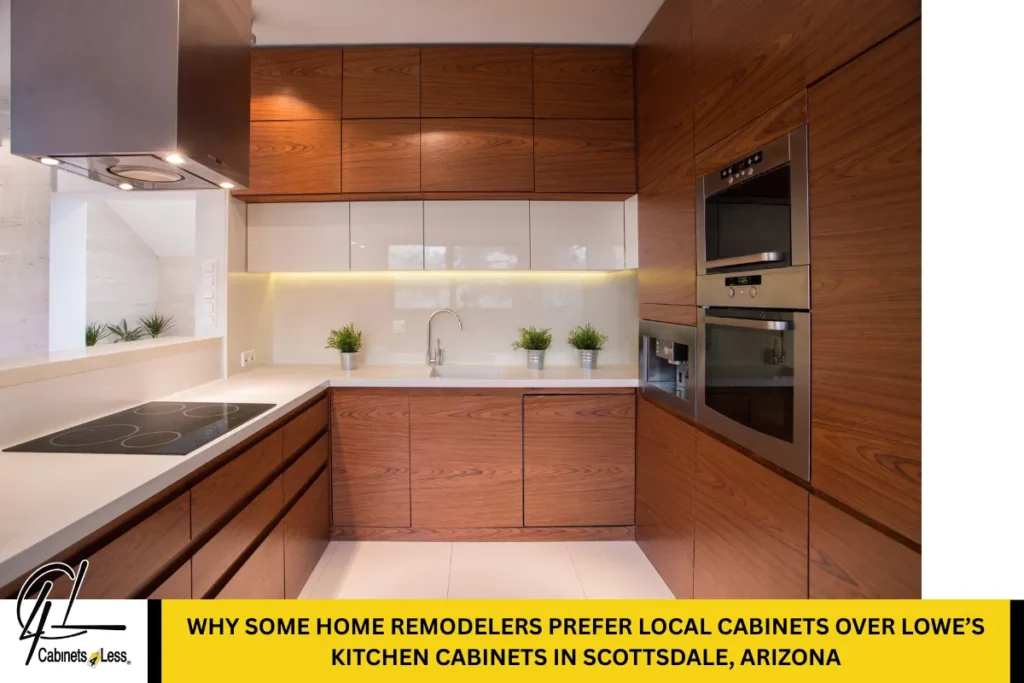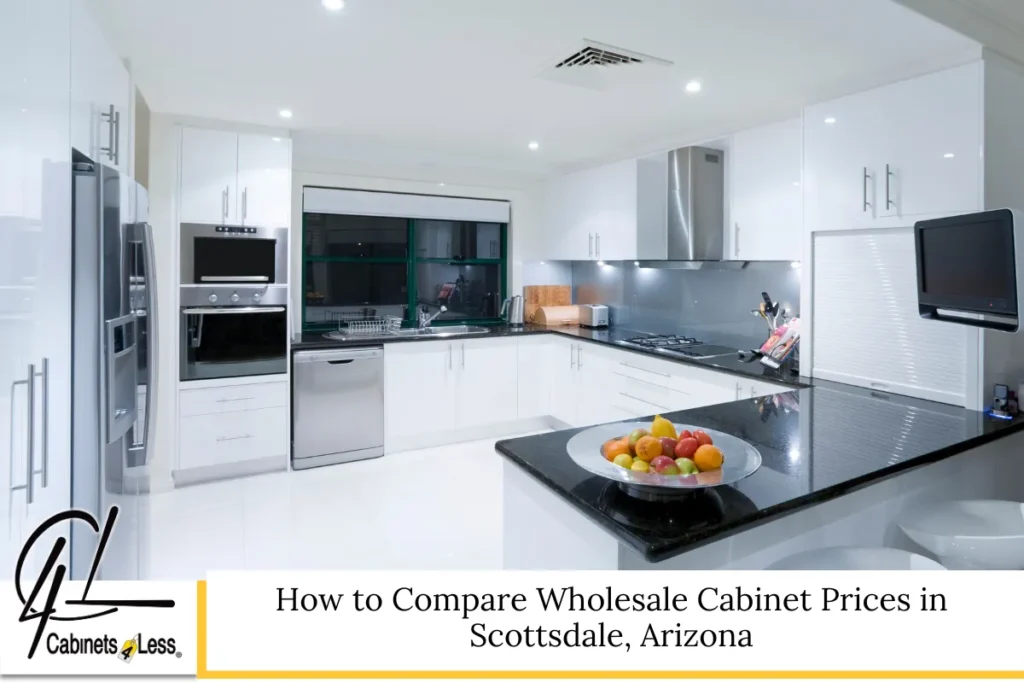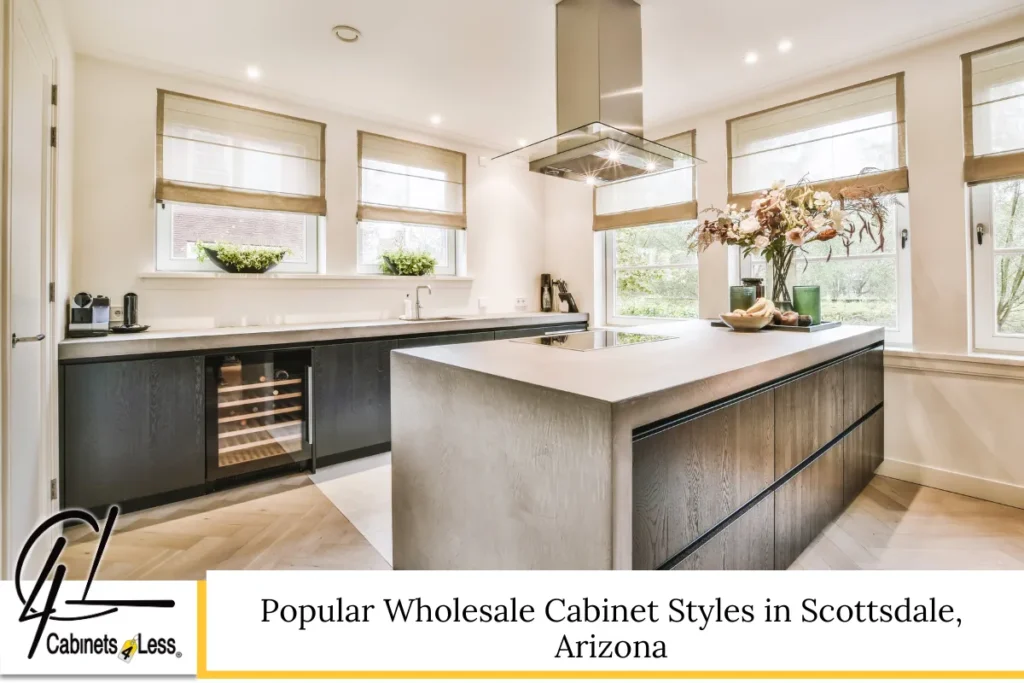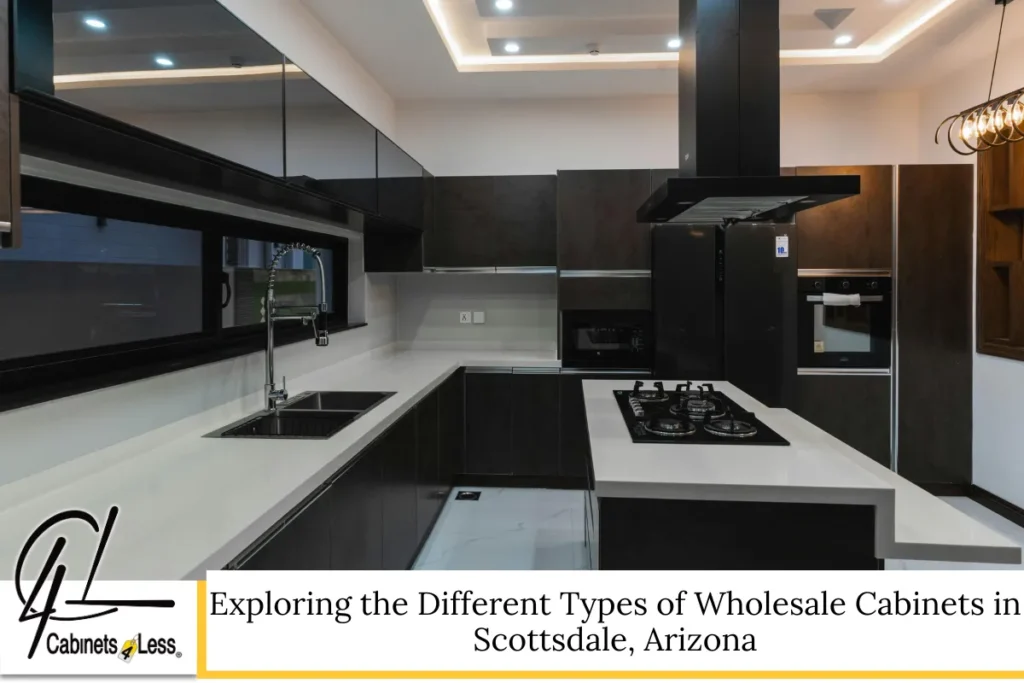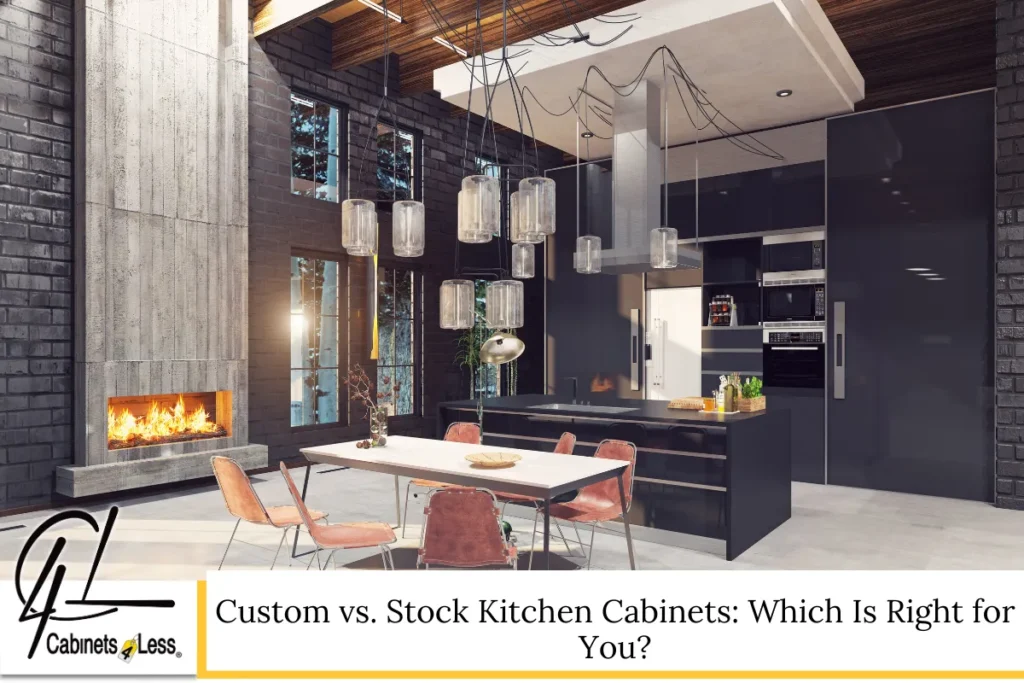When you walk into a kitchen, one of the first things you notice are the kitchen cabinets. They set the tone for the whole space—making it feel cozy, modern, rustic, or bright. But cabinets do more than just look good. They give us storage space, help keep things organized, and even add value to our homes.
Whether you’re building a new kitchen or just giving yours a fresh update, this guide will walk you through everything you need to know about kitchen cabinetry. From types of cabinets and design choices to materials and budget tips, we’ll cover it all—in a way that’s simple, fun, and super useful.
Understanding Kitchen Cabinet Basics
Let’s start with the foundation. Cabinets come in different shapes, sizes, and types, but they all share a few key parts. These include the cabinet boxes, drawer fronts, and cabinet door styles. Together, they create the look and function of your storage.
Types of Cabinets
There are three main types you’ll see in most homes:
- Base cabinets: These sit on the floor and hold up your countertops. They often include kitchen drawers and pull-out shelves.
- Upper cabinets: These are mounted on the wall above the countertops. They’re great for storing dishes and spices.
- Tall cabinets: Also called pantry cabinets, these give you lots of usable space from floor to ceiling.
Popular Cabinet Styles That Fit Every Taste
There’s a cabinet door style for every kitchen. Some are simple and clean, while others are detailed and fancy.
Common Cabinet Styles:
- Shaker: Classic and simple, made from a solid frame and panel.
- Raised Panel: More traditional, with a raised center panel.
- Flat or Slab Panel: Sleek and modern, often used in frameless cabinets.
- Glass-Front: Let you show off beautiful dishes or collectibles.
Choosing the right style depends on your kitchen theme—farmhouse, modern, coastal, or anything in between.
How Cabinets Are Built: From Factory to Kitchen
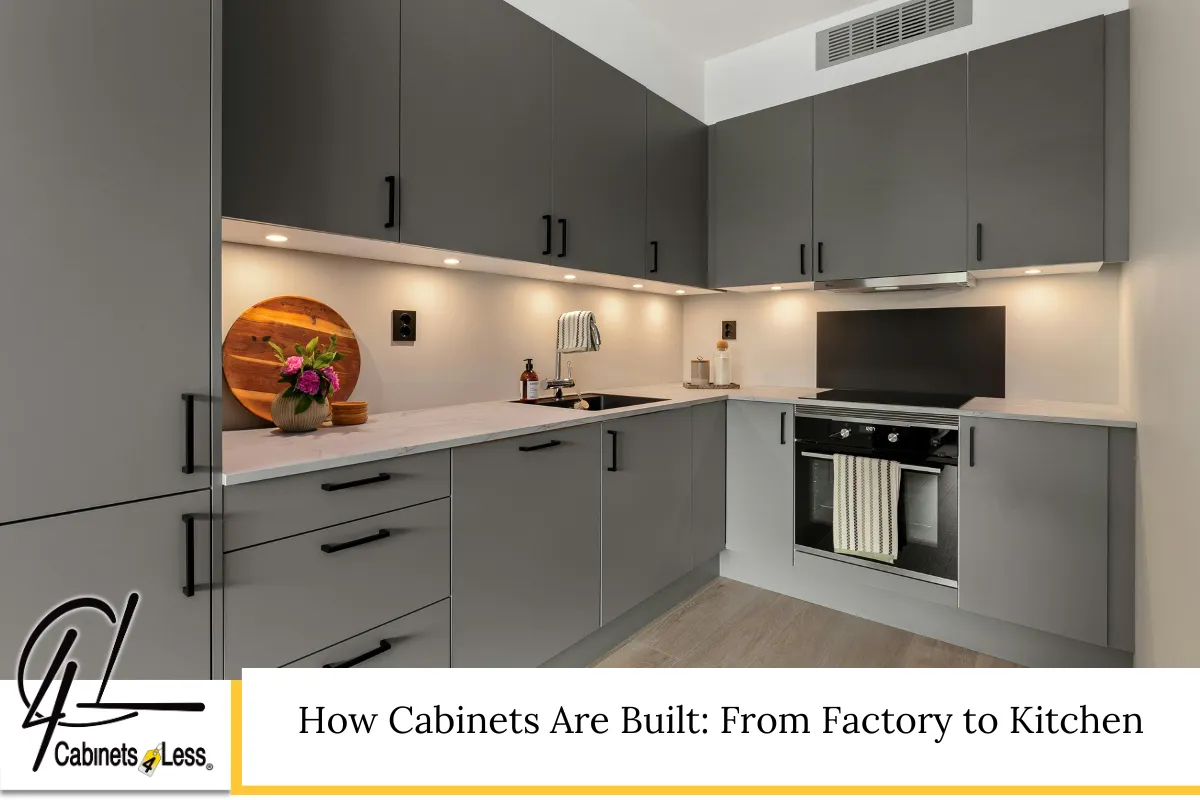
When it comes to cabinet construction, there are a few terms to know:
- Stock cabinets: These are pre-made and ready to install. They’re the most affordable and available at most cabinet stores.
- Semi-custom cabinets: These let you pick some options like size and finish. They’re a great balance between choice and price.
- Custom cabinets: Made just for you. These give you complete control over design, material, and fit, but they’re often the most expensive option.
Another important difference is framed vs. frameless cabinets. Framed cabinets have a face frame (a border), while frameless cabinets (common in Europe) skip the frame, giving you more storage options and easier access.
What Cabinets Are Made Of
Cabinets can be built using different wood products, each with its own feel, strength, and cost. Let’s look at a few:
- Solid wood: A classic piece of wood like oak or maple. It’s strong and beautiful but can be pricey.
- Plywood: Made from thin pieces of wood glued together. It’s strong and more affordable than solid wood.
- MDF (Medium-Density Fiberboard): Made from wood fibers, it’s smooth and great for painting.
- Particleboard: Cheaper, made from tiny wood fibers and glue. Not as strong.
- Wood veneers: A thin layer of natural wood glued to a base like MDF or plywood. It gives the beauty of wood without the full cost.
Different wood species—like cherry, birch, or walnut—can change the color, grain, and cost of your cabinets.
Making Cabinets Work for You: Function First
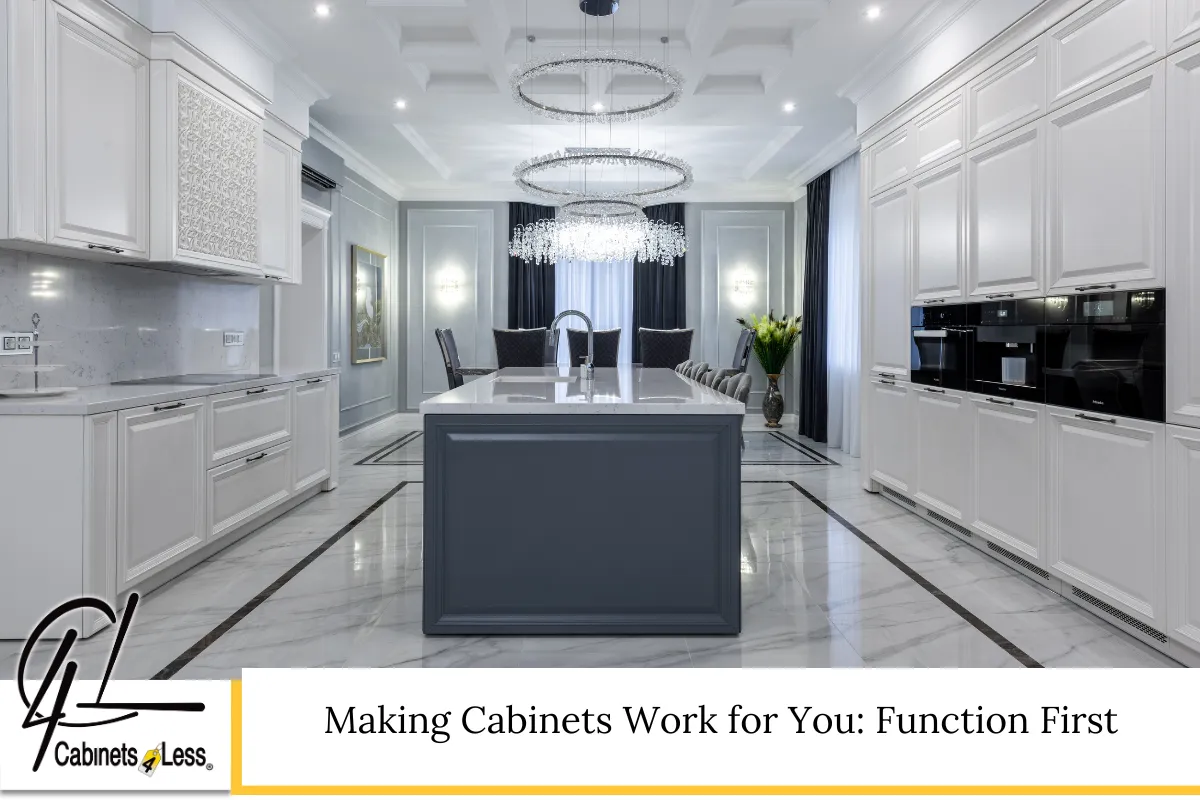
Your kitchen isn’t just for show—it has a job to do! That’s where cabinet functionality matters most. Here are ways to make your storage space work harder:
- Pull-out trays and lazy Susans for corners
- Deep kitchen drawers for pots and pans
- Dividers for baking sheets
- Spice racks and trash roll-outs
These smart storage options help you keep everything in reach and organized. With the right setup, every input variable (your needs) can lead to better output values (your daily kitchen joy).
When designing, think about the work triangle: stove, sink, and fridge. Keeping that triangle smooth and open is like finding the best objective function in math—it keeps everything working at its best.
Planning and Layout Tips That Save Headaches
Your kitchen’s layout affects how it looks, but also how it feels to use. Whether you’re dealing with a small galley or a big open kitchen, planning your cabinet layout means thinking about how you’ll move and cook.
- Match cabinet door style with your overall kitchen theme.
- Plan for plenty of counter space.
- Avoid wasted corners by using clever storage options.
- Mix and match upper cabinets with open shelving or glass doors.
Think of your layout like a Polynomial function—each part (or term) adds something important. If one part is off, it changes the whole equation!
Budgeting for Cabinets: Finding Function, Value & Style
Choosing kitchen cabinets isn’t just about what looks nice—it’s about what fits your budget and gives you the best return values over time. Whether you’re shopping at a local cabinet shop or browsing an online cabinet store, you’ll find a wide range of prices.
Types of Cabinet Pricing:
- Stock cabinets: These are your most affordable option. Since they’re pre-made, they have limited sizes and finishes but are great if you’re on a tight budget.
- Semi-custom cabinets: A step up in flexibility. You get more size options, materials, and finishes—ideal for homeowners who want a balance of quality and customization.
- Custom cabinetry: This is the expensive option, but you’ll get cabinets built exactly to your kitchen’s dimensions and your personal style. Think of it like programming your kitchen with complete control—every input variable is yours to define.
Pro Tip: Don’t overspend on decorative extras if you’re working with a smaller budget. Instead, focus on smart storage space and durable wood products.
Trusted Brands & Where to Shop
Some brands and manufacturers are known for their quality and variety. While we won’t name specific stores, here are the types of places you can find kitchen cabinetry:
- Cabinet showrooms: These offer a hands-on look at finishes, materials, and styles.
- Big box stores: Good for stock cabinets and semi-custom cabinetry.
- Specialty cabinet shops: Best for custom cabinets and personalized service.
- Online cabinet stores: Convenient, often with design tools and direct shipping.
You’ll also find well-known brands offering everything from base cabinets to upper cabinets, with options in solid wood, wood veneers, and even eco-friendly materials.
Caring for Cabinets: Keep Them Looking Like New
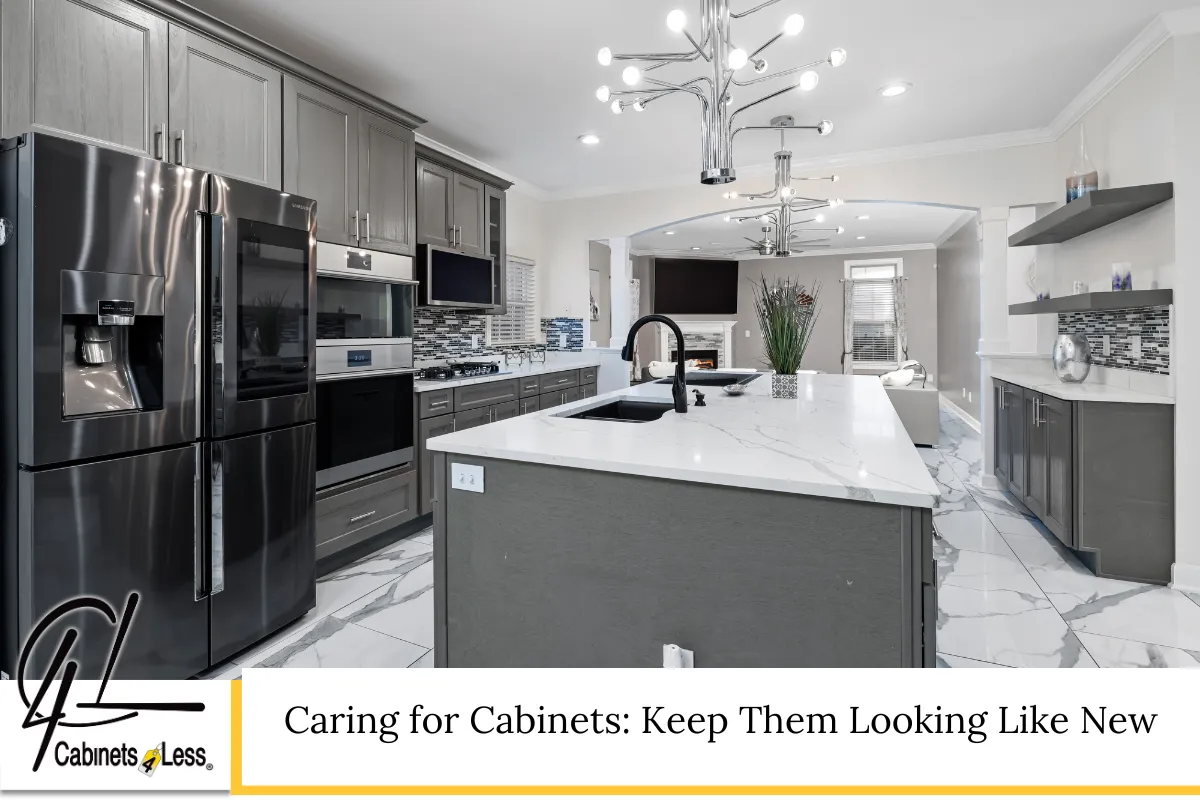
Proper care keeps your investment looking sharp. No matter what material your cabinets are made of—whether it’s natural wood, wood veneers, or painted finishes—cleaning them the right way protects your kitchen’s beauty.
Simple Cabinet Care Tips:
- Wipe spills right away to protect finishes.
- Use a mild soap and soft cloth for routine cleaning.
- Avoid harsh scrubbers on wood veneers or MDF surfaces.
- Check for loose hinges and drawer slides and tighten them regularly.
Cabinets built from pieces of wood or wood fibers will expand and contract with moisture, so try to keep humidity steady.
Final Thoughts: Designing Cabinets with Value That Lasts
Designing your kitchen cabinetry doesn’t have to be overwhelming. Whether you’re starting from stock cabinets or dreaming up custom cabinets, the goal is simple: build a space that works for you.
Remember, cabinets are more than shelves and drawers—they’re a key part of how your kitchen feels and functions. Choosing the right cabinet door style, materials, layout, and storage options can turn your kitchen into a place you love every day.
And just like in math class, every input variable affects your outcome. Think of your kitchen like a continuous function—you want it to flow, make life easier, and return real values you can enjoy for years.
Scottsdale Kitchen Cabinets – C4L Cabinetry
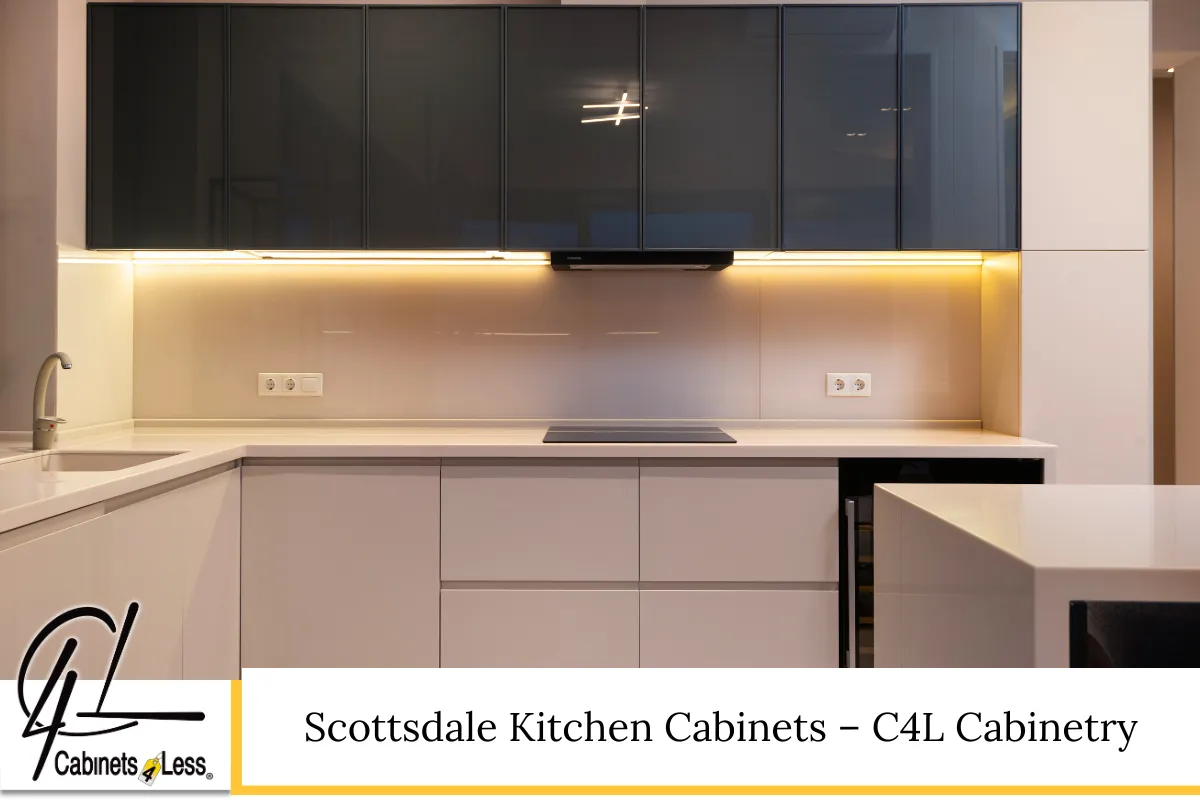
Looking for high-quality kitchen cabinets in Scottsdale, Arizona? C4L Cabinetry delivers custom, semi-custom, and stock solutions that combine beauty, function, and unbeatable value. From modern frameless cabinets to timeless Shaker styles, we help homeowners transform their kitchens with expert design and premium craftsmanship. Whether you need more storage space, updated cabinet door styles, or a full remodel, we’ve got you covered. Serving Scottsdale and surrounding areas, we make the process easy and stress-free.
📞 Call us today at (480) 597-8034 or fill out our quick contact form to schedule your free consultation. Let’s bring your dream kitchen to life with the perfect cabinets, built to fit your space and style!
Frequently Asked Questions: Kitchen Cabinets 101
What is the difference between framed and frameless cabinets?
Framed and frameless cabinets differ mainly in construction. Framed cabinets include a cabinet frame—a visible border on the front that adds strength and style. This entire frame allows doors to be attached directly and works well with Inset cabinets, traditional styles, and transitional styles.
Frameless cabinets, popular in contemporary kitchens, eliminate the face frame. Doors attach directly to the cabinet box, creating clean lines and more usable storage space. This contemporary design often pairs with flat-front cabinets or slab kitchen cabinets.
- Framed cabinets: better for corner cabinets and decorative cabinet hardware.
- Frameless cabinets: better access, seamless look, ideal for modern designs.
Both options are standard in many cabinet lines, so choose based on your design preferences and layout needs.
What is the best material for kitchen cabinets?
The best material for kitchen cabinets depends on your kitchen renovation goals, budget, and daily use. Common choices include:
- Solid wood – Offers natural beauty and durability. Ideal for white cabinets or black cabinets in traditional styles.
- Plywood – Strong and moisture-resistant, perfect for base cabinets and tall pantry cabinet.
- MDF – Smooth and stable, often used in flat panel and slab doors.
- Particleboard – A budget option often found in discount kitchen cabinets.
For longevity, custom kitchen cabinets often combine solid wood frames with plywood interiors. Choose materials that match your cabinet design and cabinet sizes, and balance strength with appearance.
Are custom cabinets worth the investment?
Yes, custom kitchen cabinets are often worth the cost, especially if you have unique space or style needs. While more expensive than stock kitchen cabinets or semi-custom kitchen cabinets, they allow full personalization. This means:
- Exact cabinet sizes to fit every space.
- Choice of kitchen cabinet styles, finishes, and cabinet hardware.
- Tailored options like tall wall cabinets or Two-Tone Cabinets.
A custom cabinet maker ensures quality, using premium materials and craftsmanship. In spaces like an L-shaped kitchen or small room with awkward corners, custom options improve the utility function of every cabinet.
Think of it like choosing the best average function for your lifestyle—input values like personal taste and kitchen layout return long-term value.
How do I choose the right cabinet style for my kitchen?
Choosing the right kitchen cabinet styles depends on your personal style, kitchen layout, and desired vibe. Use this Kitchen Cabinet Style Guide:
- Traditional styles: Raised panels, cabinet frame, decorative edges.
- Modern designs: Flat-panel cabinets, slab doors, minimalist cabinet hardware.
- Transitional styles: A blend of classic and contemporary, often with matte black handles.
In contemporary kitchens, flat-front cabinets and slab kitchen cabinets with clean lines are popular. For small kitchens, lighter finishes like white cabinets or glass-front cabinets can open the space.
Match cabinet types and cabinet design to the tone of your room and mix colors or textures to create a stylish, balanced look.
What’s the average lifespan of kitchen cabinets?
The average function of well-made cabinets lasts around 20 to 50 years. That depends on usage, materials, and care. High-quality solid wood or plywood cabinets last the longest, especially when built by a custom cabinet maker.
Lifespan factors:
- Cabinet types: Stock kitchen cabinets may wear out faster than semi-custom kitchen cabinets.
- Cabinet hardware: Soft-close hinges and drawer glides add longevity.
- Care: Wiping spills and avoiding excess moisture preserves finishes.
Using cabinet lines with durable finishes and materials increases long-term value. Whether you have base cabinets, 42-inch cabinets, or tall pantry cabinet, proper care extends life and performance.
What cabinet layout is best for small kitchens?
In compact spaces, layout is key. A smart layout increases usable space, enhances utility function, and provides better access to essentials.
Best layouts for small kitchens:
- L-shaped kitchen – Efficient and open.
- Galley – Great for narrow spaces.
- One-wall – Works well with 30- or 36-inch cabinets and tall wall cabinets.
Use corner cabinets for storage and wall cabinets to free up counter space. Avoid overcrowding by choosing standard sizes and limiting depth—depth for base cabinets is usually 24 inches.
Pick cabinet types like flat-front cabinets or glass-front cabinets to keep the space visually open. Always consider linear feet to measure cabinet run accurately.
Can I mix cabinet styles or finishes in one kitchen?
Absolutely! Mixing styles of kitchen cabinets and finishes is a growing trend that adds character. Whether you’re combining matte black handles with white cabinets or mixing Inset cabinets with slab doors, thoughtful contrast enhances the room.
Tips for mixing:
- Use Two-Tone Cabinets: Light upper, dark lower for balance.
- Combine traditional styles with modern designs in transitional styles.
- Add glass-front cabinets next to flat panel for variety.
Stick to one cabinet line or design style per zone to maintain harmony. Your goal is to match design preferences while making the most of your space’s function and flow.
How much should I budget for new cabinets?
The cost of cabinets depends on cabinet types, layout, and finish. On average:
- Stock kitchen cabinets: $100–$300 per linear feet
- Semi-custom kitchen cabinets: $150–$650 per linear feet
- Custom kitchen cabinets: $500–$1,200+ per linear feet
Budgeting Tips:
- Measure total linear feet.
- Factor in cabinet hardware, accessories, and installation.
- Set aside 25–35% of your total kitchen renovation cost for cabinetry.
Remember, size matters—cabinet sizes like 42-inch cabinets cost more than standard depth units. Focus on maximizing utility function and selecting durable materials that offer long-term value.
Are there eco-friendly or sustainable cabinet options?
Yes, many brands now offer green types of kitchen cabinets. Look for:
- FSC-certified wood from sustainable sources.
- Cabinet boxes made from low-emission wood products like CARB2-compliant MDF or plywood.
- Water-based, low-VOC finishes.
Options like slab kitchen cabinets or flat-panel cabinets in eco-materials support both modern ambiance and environmental values. Many cabinet lines also use wood veneers to reduce waste while showcasing the natural beauty of real wood.
Sustainable doesn’t mean boring. Today’s eco-friendly choices offer the same variety in kitchen cabinet doors, cabinet sizes, and cabinet styles—just with a cleaner footprint.
Where can I buy quality cabinets online?
There are many reputable sites that sell Stock kitchen cabinets, semi-custom kitchen cabinets, and even custom kitchen cabinets online. Look for:
- Clear return policies and customer reviews.
- Detailed specs on cabinet frame, materials, and cabinet hardware.
- Options for flat-panel cabinets, glass-front cabinets, or tall pantry cabinet solutions.
Online cabinet store sites often feature digital planners, photo galleries, and Kitchen Cabinet Style Guide tools to help with choices.
Make sure to verify:
- Cabinet sizes (e.g., 30- or 36-inch cabinets)
- Standard depth for base cabinets
- If they ship to your location and offer design help
A little research leads to big savings and the right fit for your design styles and needs.
Read How to Find Reliable Wholesale Cabinet Suppliers: What to Look For
